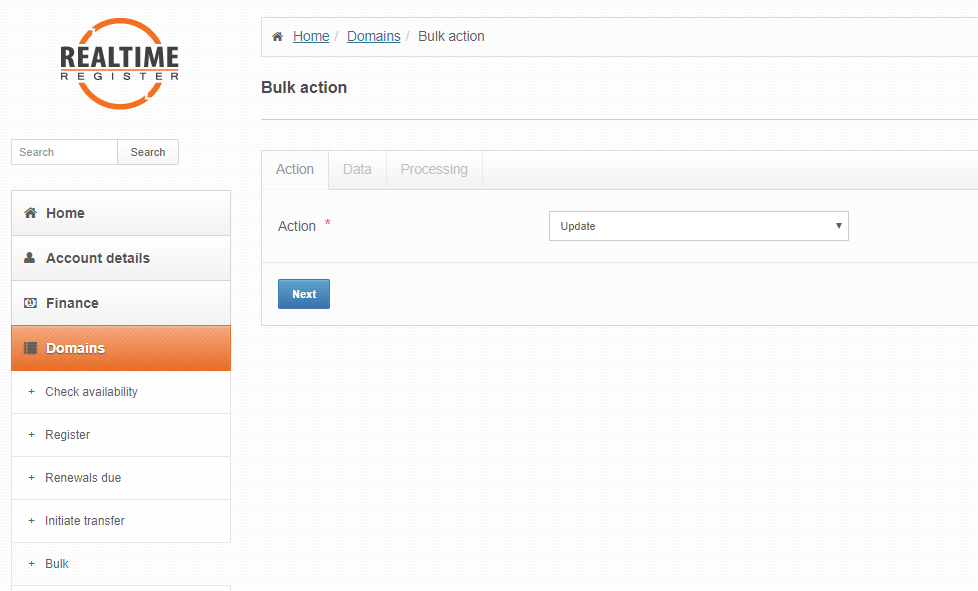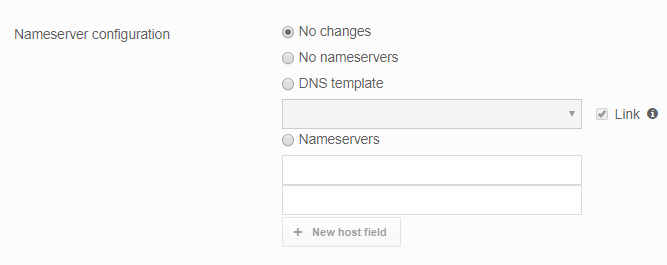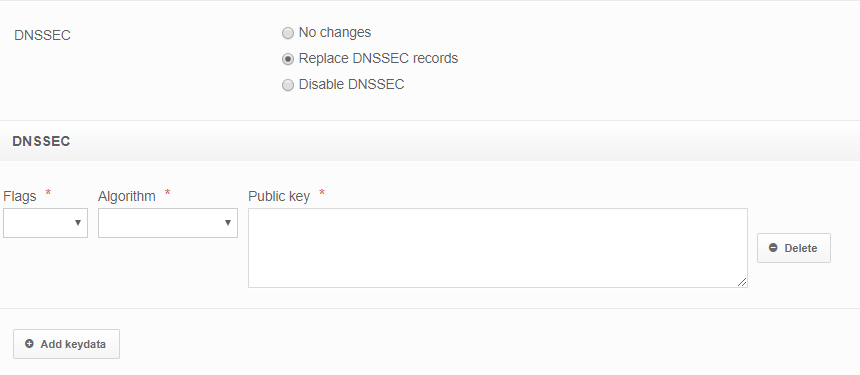Bulk update
Login to the Domain Manager and go to Domains > Bulk
- Select the Update option and click next.

On the data tab, multiple updates can be initiated. Below is a list of the bulk update actions you can execute with the bulk tool.
- Ability to update multiple domains to new Admin, Billing, Tech and Registrant contacts for multiple domains
- Change privacy protect settings for multiple domains
- Generate new authcodes for multiple domains
- Add or remove a status for multiple domains
- Set autorenew setting to true or false for multiple domains
- Change the autorenew cycle for multiple domains
- Update nameservers for multiple domains
- Update DNSSEC settings for multiple domains
Keep in mind that when left empty, fields are not updated once the bulk update is requested. Only the information you change is requested to be updated in the requested bulk update.
Domains
- In all cases, you will have to submit the list of domains you wish to request a bulk update for.

Once you've submitted the list of domains, you will have to provide input on which fields require an update. To do so, submit the information in the fields according to the instructions described below.
| Contacts |
Privacy protect |
Authcodes |
Status |
Autorenew |
Auto renew cycle |
Nameservers |
DNSSEC |
Process update |
Contacts & designated agent
- Submit the contacts you need to update.
Take note: Some registries require additional properties or contact validation for an update to be able to succeed. If the TLD's you've submitted supports it, you can also select whether to act as designated agent or not. To review if a specific TLD supports the designated agent option, Review the TLD metadata overview. For more information on the designated agent option itself, review the designated Agent knowledge base articles.

Privacy protect
- Select the desired Privacy Protect setting for the domains you wish to update. Selecting 'No changes' will leave the Privacy Protect setting as is. To determine if a TLD supports privacy protect, review the TLD metadata overview

Authcodes
- To generate new authcodes in bulk, you can use this option. It's always advised to generate new authcodes and not use custom authcodes. This way you will be sure that the syntax will always be correct. However, if you do need to set up a custom authcode, there is an option for it. If you select 'No changes' the authcode will not be updated in the bulk update.
Take note: using one single auth-ID for multiple domains is a potential risk for domain theft

Domain statuses
- To add or remove a status for multiple domains, simply select the status you wish to add/remove as detailed in the image below. Selecting no status will skip any status update.

Auto renew setting
- For the selection of domains you've entered, you can update the autorenew setting to true or false. Selecting 'On' will force the true setting, selecting 'Off' will force the false setting and selecting 'No changes' will leave the autorenew setting untouched in the update.

Auto renew cycle
- For the selection of domains you've entered, you can change the autorenew cycle to the desired one by selecting it in the drop-down menu. For a detailed overview of which periods are supported per TLD, review the TLD metadata overview.

Nameservers
- For the selection of domains you've entered, you can update the nameservers in one go. Select one of the options available. You can connect a DNS-template and use our nameservers, select no nameservers to remove the current nameservers or specify your own nameservers added to the hosts section in the Domain Manager.

DNSSEC
- For the selection of domains you've entered, you can update the DNSSEC settings. If you want to update the key-data itself, it's advised to update a single domain at a time. Refer to the update a single domain section for more information on this.
Take note: The bulk option for DNSSEC is best to use for disabling DNSSEC for multiple domains. Select the option 'Disable' and DNSSEC key-data for the selected domains is removed.

Process update
- Click next after setting up all the changes you wish to make to the selected domains.

- On the next page, you confirm the requested bulk update. After confirmation, an overview with detailed error information or a simple success message is given.

- You've now successfully executed a bulk update.
